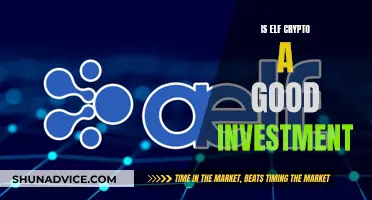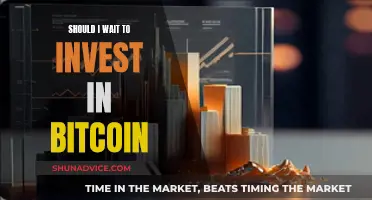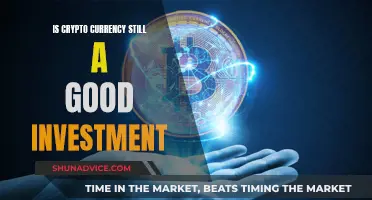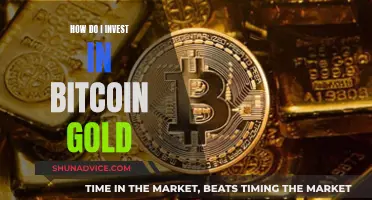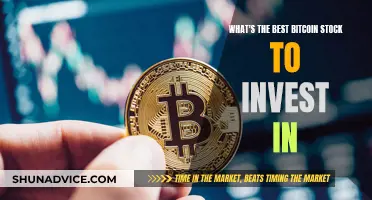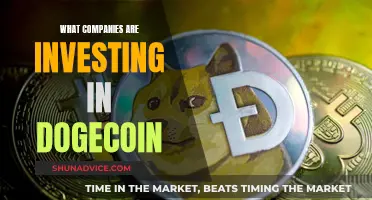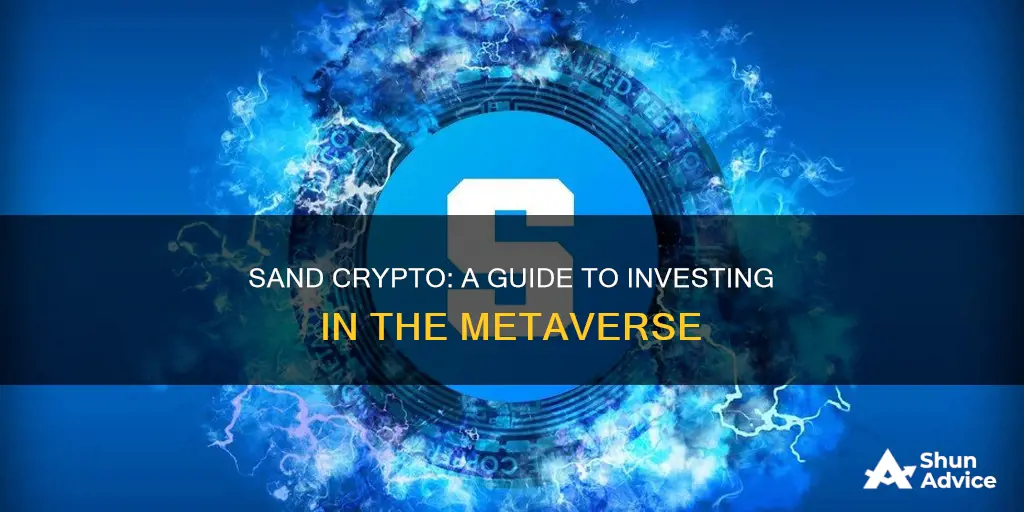
The Sandbox is a blockchain-based virtual world developed by Pixowl, which allows people to create and explore universes. The Sandbox is a play-to-earn game that combines blockchain technology and non-fungible tokens (NFTs) in a three-dimensional (3D) metaverse. The Sandbox is hosted on the Ethereum (ETH) network and is powered by its native token, SAND. The Sandbox allows players to create their own worlds and games and have true ownership of their creations as NFTs. In exchange for participating and playing, players earn SAND tokens. The SAND token fuels the platform and can be earned by selling assets, by owning land which can be rented or populated with content to increase its value, and/or by building and monetising games through the GAME MAKER function on the lands that are owned by players.
| Characteristics | Values |
|---|---|
| Type of Token | ERC-20 token |
| Blockchain | Ethereum |
| Use | Monetise in-game items, stake to earn interest, governance |
| Game Type | Play-to-earn |
| Game Features | 3D editors, marketplace for NFTs |
| Supply | 3 billion |
| Current Price | $5.50-6.62 |
| Market Capitalisation | $4bn |
| Rank | 38th-49th |
What You'll Learn

Understand the risks of investing in crypto
All investments carry some degree of risk, but the unregulated nature and complexity of the cryptocurrency markets mean that investing in crypto is particularly risky. Here are some of the key risks you should be aware of before investing in crypto:
- Volatility: The value of cryptocurrencies is subject to wild swings and is significantly more volatile than more traditional investments like shares and property. This volatility is driven by various factors, including news and market sentiment, speculation, and market manipulation. Positive and negative news, such as a tweet from Elon Musk or the threat of regulation, can have a significant impact on crypto prices.
- Security: Cryptocurrency exchanges and digital wallets are vulnerable to hacking and other malicious activities. If your private key is lost, destroyed, or compromised, you may lose access to your crypto assets. Additionally, over a third of crypto investors do not fully understand the technology, making security breaches a very real risk.
- Regulatory uncertainty: The lack of clear regulatory frameworks around cryptocurrencies creates uncertainty for investors. There is a concern that future restrictions may be imposed, impacting the value of cryptocurrencies or even banning them altogether. The complex and disorganized nature of crypto regulations also makes it challenging for investors to understand their tax obligations and record-keeping requirements.
- Limited market adoption: Cryptocurrencies and blockchain technology are still in their infancy, and market adoption remains low. There are regulatory concerns, technology shortfalls, public misunderstandings, and market volatility that impede the broad adoption of this new asset class. There is a chance that cryptocurrencies will never be widely adopted, leading to a complete loss of value.
- Custody and consumer rights: Cryptocurrencies are typically stored in digital wallets, which means they are effectively held by a third party. Unlike traditional investments through a bank or brokerage, cryptos lack official safeguards or insurance. If assets are lost or stolen, investors cannot recover them, and mistaken transactions cannot be reversed.
- Scaling issues: If a cryptocurrency platform cannot handle a large influx of users or effectively regulate content, it may suffer from scaling issues. This could lead to users leaving the platform, resulting in a decrease in the value of the associated crypto token.
Bitcoin: Should You Invest?
You may want to see also

Learn about the Sandbox game and its history
The Sandbox is a play-to-earn game that combines blockchain technology and non-fungible tokens (NFTs) in a three-dimensional (3D) metaverse. It is hosted on the Ethereum (ETH) network and is powered by its native token, SAND. Inspired by major game-creation systems such as Minecraft and Roblox, The Sandbox allows players to create their own worlds and games and have true ownership of their creations as NFTs.
The Sandbox was initially known as two separate mobile games: The Sandbox, which was launched in 2011, and The Sandbox Evolution, which was launched in 2016. Together, the two games generated about 40 million downloads across the Android and iOS platforms. In 2018, the games' developer, Pixowl, was acquired by Hong Kong-based game software company Animoca Brands, which integrated the popular games into the blockchain ecosystem.
The game itself is split into three parts: VoxEdit, the Sandbox marketplace, and GAMEMAKER. In VoxEdit, players can create and animate 3D objects such as people, animals, tools, and foliage, which are then exported into The Sandbox's marketplace and sold as NFTs. In the Sandbox marketplace, users can upload, publish, and sell their assets as tokens. In GAMEMAKER, players who own assets can use them to play the game itself, placing their assets within a piece of LAND (an NFT) that they own within The Sandbox. Several LANDS can be combined by players to form an ESTATE.
The Sandbox allows players to have true ownership of their creations, with the ability to sell them on the marketplace for SAND tokens. Players can also earn SAND tokens by owning LAND, which can be rented out or populated with content to increase its value. Additionally, players can build and monetise games through the GAME MAKER function on the LANDS they own. SAND tokens can also be used to play games, make in-game purchases, and customise avatars.
The Sandbox has continued to evolve and gain popularity, with new features and improvements being added regularly. It remains to be seen whether it will be able to maintain its success and compete with other metaverse games in the future.
Bitcoin Investment: Potential Losses and Gains
You may want to see also

Research the SAND token's price history
The Sandbox (SAND) is a blockchain-based virtual world that allows users to create, buy, and sell digital assets. It was launched in 2011 by Pixowl and is currently in its public beta stage.
The SAND token is an ERC-20 token on the Ethereum network and is the native asset of the Sandbox ecosystem. It is used to monetize in-game items like land and decorations and can also be staked to earn interest. Additionally, it is a governance token, allowing holders to participate in the platform's decision-making process.
The SAND token was listed in Q3 2020 via an initial exchange offering (IEO) on the Binance Exchange, with an opening price of $0.0083. Its price remained relatively flat until February 2021, when it surged to over $0.90 per coin.
In November 2021, SAND reached its all-time high of $8.44, a surge of over 16,000% since its launch in August 2020. This surge can be attributed to several factors, including partnerships with popular figures and brands, such as Snoop Dogg and Adidas Originals, and Facebook's announcement of its rebrand to Meta, signalling a focus on the metaverse.
However, SAND's price is subject to volatility and has experienced significant drops as well. In December 2021, following an overall drop in Bitcoin and Ether prices, SAND fell by 29% to $4.78. In May 2022, the depegging of the UST stablecoin and the collapse of the associated LUNA crypto caused a market crash, leading to a further decline in SAND's price to $0.9708.
As of January 2023, SAND was trading at around $0.51, with a market cap of $782 million and a ranking of 49th largest cryptocurrency by CoinMarketCap.
While historical performance does not guarantee future results, understanding SAND's price history can provide context for interpreting price predictions and making informed investment decisions.
Gold Coin Investment: Which Bullion is Best?
You may want to see also

Compare SAND to other metaverse cryptos
SAND is the native token of The Sandbox, a metaverse and community-based gaming ecosystem. It is an ERC-20 token and is used as the basis for all transactions and interactions within the Sandbox ecosystem.
SAND vs MANA
SAND and MANA are two of the most popular crypto gaming coins. MANA is the native token of Decentraland, a virtual reality platform where users can buy and sell digital real estate, explore, interact, and play games in the metaverse. Both SAND and MANA are based on the Ethereum blockchain and are used as governance and utility tokens in their respective ecosystems.
The Sandbox allows users to create, share, and monetize voxel assets, as well as offering unique gaming experiences. Players can create their own NFTs using the VoxEdit tool, including avatars, environments, and hubs, and trade them on the Sandbox marketplace. On the other hand, Decentraland offers a more basic experience but may be more desirable for the average person. It also has more active users and seems to be attracting more brand attention.
SAND vs AXS
Axie Infinity (AXS) is another blockchain-based gaming metaverse that allows users to collect, breed, and raise creatures known as Axies. It has seen its coin jump by almost 22,000% since its launch in 2018 and currently has a market capitalization of $6.5 billion.
SAND vs GALA
Gala Games is a blockchain gaming developer and metaverse crypto project. It is powered by a large and independent node network that allows gamers to use their NFT characters in gameplay. GALA is the cryptographically secure native token of the Gala Games ecosystem and currently has a market capitalization of £3.1 billion.
SAND vs Enjin
Enjin is a blockchain platform and marketplace centred around player-owned NFTs. It has amassed 20 million users across 250,000 gamer communities since its launch in 2009. Enjin is the first gaming cryptocurrency to be legally authorised for trade in Japan by the Japanese Virtual Currency Exchange Association. It currently has a market capitalization of $2.2 billion.
Meta Crypto Investment: A Beginner's Guide to Getting Started
You may want to see also

Find out how to buy SAND
SAND is the utility token used within The Sandbox ecosystem as the basis for transactions and interactions. It is an ERC-20 token built on the Ethereum blockchain. There is a finite supply of 3,000,000,000 SAND.
SAND can be purchased on several major trading platforms, including:
- Binance
- Crypto.com
- Gemini
- FTX
- Huobi Global
- KuCoin
- Coinbase
- Kraken
Each platform has a slightly different process for buying SAND, but they all require you to create an account and verify your identity. Some platforms may also require you to add a payment method before you can start trading.
- Create a Binance Account.
- Select the currency of your choice.
- Choose the amount of fiat currency you want to trade.
- Choose the crypto coin you want to purchase and confirm the information.
- Select a payment method.
- Once you have purchased your chosen currency, go to "Trade" and select "Classic".
- Select the pair depending on your crypto holdings ($SAND/BTC, $SAND/BNB, $SAND/USDT).
It is important to note that the availability of certain payment methods and currencies may vary depending on your location. Additionally, some platforms may have minimum order sizes for SAND purchases.
Besides purchasing SAND on exchanges, there are a few other ways to acquire the token:
- Swapping ETH for SAND on Uniswap.
- Buying SAND with a credit card through Simplex.
- Participating in The Sandbox Ambassador Program.
- Community Airdrops.
- Winning contests and sweepstakes held by The Sandbox.
- Earning SAND through their referral or rewards program.
Wall Street's Bitcoin Investment: What's the Verdict?
You may want to see also
Frequently asked questions
Sand is the cryptocurrency used in the metaverse game The Sandbox. It is an ERC-20 token on the Ethereum network and is the native asset of the Sandbox ecosystem.
You can invest in Sand on platforms such as Gemini, Crypto.com, and Binance. You will need to sign up for an account, verify your identity, and fund your account with fiat currency or another cryptocurrency.
As with any cryptocurrency, investing in Sand comes with risks. It is a volatile asset that can fluctuate in value. There is also the risk of losing money due to hacks or liquidity problems on exchanges. Additionally, there may be limited real-world utility for Sand outside of the metaverse game.


